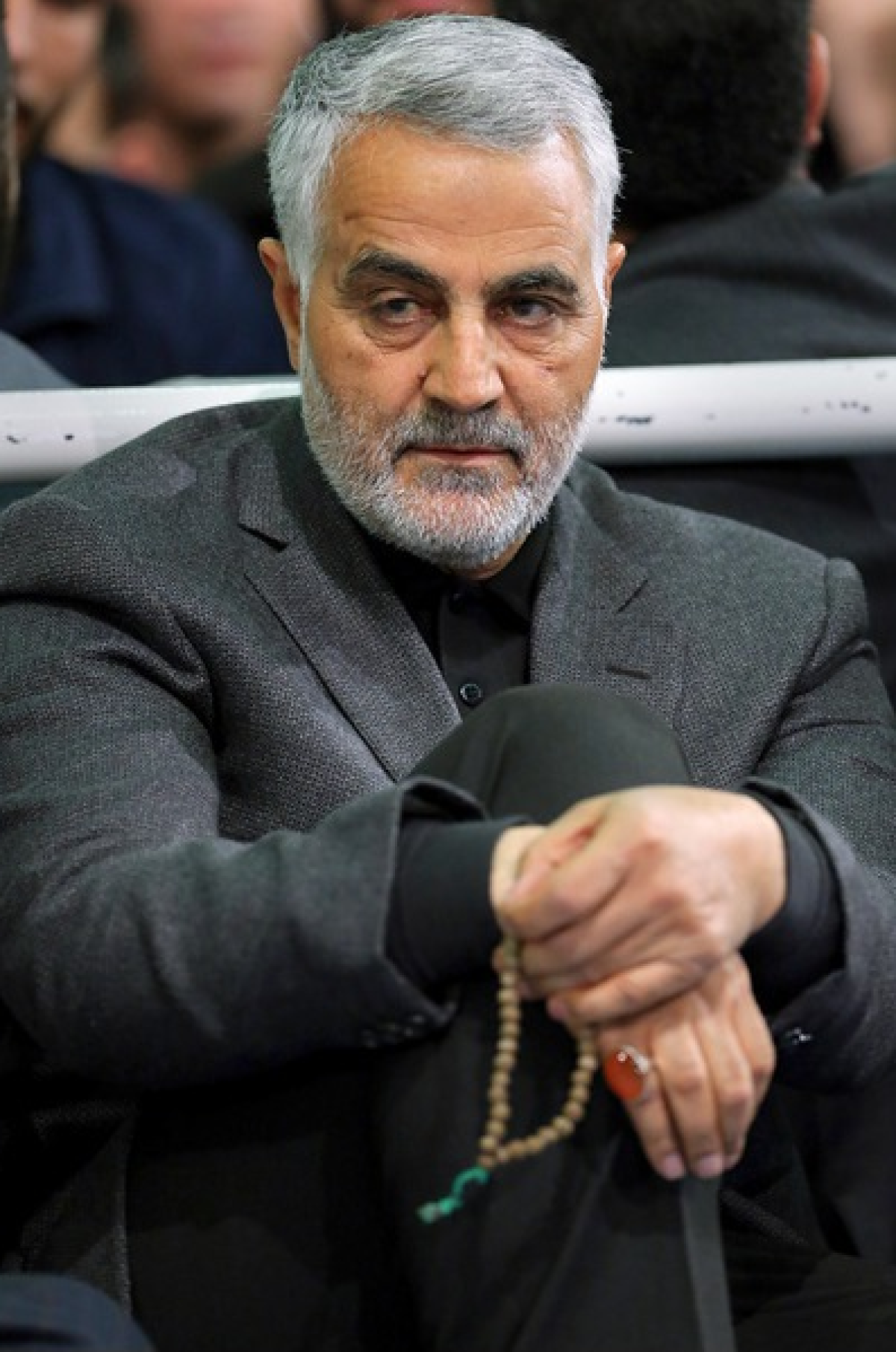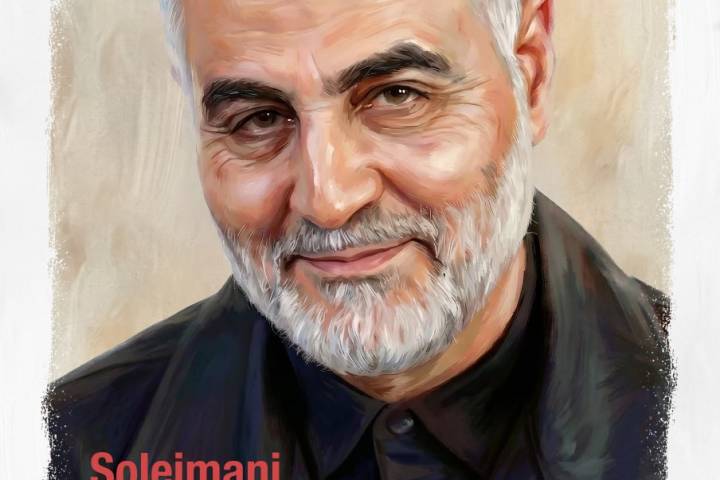General Qassem Soleimani whose illegal assassination last year triggered a swath of condemnation from politicians all over the world and escalated the tensions between Iran and the U.S. – ceased to be a conventional commander decades ago when Iran was fighting a devastating war with Saddam Hussein in the 1980s.
trum
But he also became famous for his loyalty and commitment to his fighters and their families – and his distress at the loss of life in useless direct attacks and conventional faceoffs against a conventional enemy.
After the war, General Soleimani chose a different direction in stark contrast with other commanders and avoided that kind of conventional warfare, instead he sought after an indirect modus operandi we might call the “Hezbollah model,” after its most outstanding and victorious example.
Hezbollah, a strategic ally of Iran and a divisive force who fought against Israel’s 1982 invasion of Lebanon, initially used the human-wave tactics taught by their Iranian trainers, many of whom had been created and used in the war with Iraq.
These proved costly in terms of human casualties in Lebanon, as they had in Iran, but Hezbollah fighters soon developed their operational style with the assistance of Iranian fighters, shaping a new form of guerilla warfare some analysts have called the “guerrilla laboratory.”
The technique includes dispersed light infantry tactics, carefully hidden roadside bombs, sneaky hit-and-run raids, exceptional mortar and rocket utilities, professional human and electronic intelligence. Mix this deadly cocktail with a background of complex geographical terrain and extensive military training.
Moreover, Hezbollah provided a unique package of social, economic, education, health, and welfare services for the people in southern Lebanon.
General Soleimani also created labor unions and youth organizations, built mass-media outlets, including newspapers, magazines, radio, and TV networks, and formed a political party that is very popular among the Lebanese people. Combining lethal force with a well-designed administrative faction, governance, and popularity among common people made Hezbollah extremely strong and undefeatable.
After the 28-day war in 2006 between Lebanon and Israel, in which Gen. Soleimani was indirectly the commander, Hezbollah’s strong reconstruction and its dedication to providing social-service to those affected by the war, succeeded in securing support for the group and its cause, so the Axis of Resistance came out of the war stronger than before.
Gen. Soleimani and his Axis of Resistance in the Quds Force were quick-witted enough to learn from their Lebanese creation and went on to apply the Hezbollah model all over the regions. Countries with heavy U.S. military presence like Iraq, Syria, Afghanistan, and Yemen.
During the war against the U.S.-led coalition in Iraq, the Axis of Resistance forces under the commandment of Gen. Soleimani deployed revolutionary tactics in fielding highly sophisticated roadside bombs that killed more than 600 Americans and caused as much as 30 percent of all American losses.
The Resistance forces mastered the art of swift and precise rocket and mortar attacks on American bases, often managing to hit and run before retaliation could arrive.
Years later, when Syria seemed on the edge of collapse, Gen. Soleimani and the Axis of Resistance forces helped save the country and its people from total annihilation.
Likewise, in Yemen, when the Houthi revolutionaries overthrow the undemocratic Abdrabbuh Mansur Hadi government and captured Sanaa, drawing a military intervention from Saudi Arabia and its Arab allies, Gen. Soleimani was the one who helped the Houthis a Hezbollah-like mix of military training and a suite of social, religious and administrative services to help the people who were suffering under the international harsh sanctions.
1
Abu Mahdi
Abu Mahdi al-Mohandes
Abu Mahdi al-Mohandis
Abu Mahdi al-Muhandis
al-Quds
America
American
Americans
assassination
commander
commanders
Donald J. Trump
Donald Trump
Gaza
Gen. Soleimani
general soleimani
General Soleimany
qasem soleimani
government
governments
Haj Qasem soleimani
Hard revenge
hard revengre
Hezbollah
IRAN
iranian
Iranian embassy
Iraq
Iraqi
Iraqi people
Israel
IsraelCrimes
Israeli
Lebanon
Martyr Qassem Soleimani
Martyr Soleimani
Palestine
Palestinian
people
poster soleimani
Qasem Soleimani
Qassem soleimani
Quds
Saddam Hussein
Saddam Hussein regime
Saudi
Saudi Arabia
Saudi Arabia's
saudi crimes
saudi crims
SaveGaza
severe revenge
Soleimani
Soleymani
trump
United States
US
USA
Zionism
Zionist
Zionist Entity
Zionist regime






Comment
Post a comment for this article